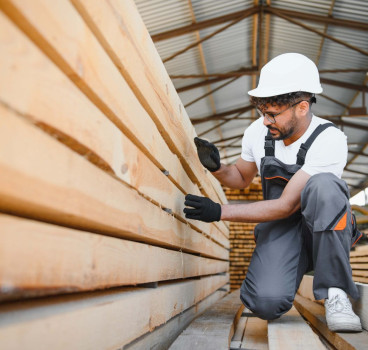How inevitable are construction site fires?
Construction sites have always had the potential to be fire hazards. In an environment surrounded by flammable materials, complex machinery and temporary structures it is almost inevitable that fire will occur without proper vigilance, resulting in property damage, financial loss, project delays and tragically, in some cases, loss of life, writes John Ridgeway.
In the United States, the National Fire Protection Association (NFPA) has identified welding, cutting and hot work as the leading causes of fires on construction sites. It is a similar situation in Europe, compounded by the inherent risks associated with construction activities, such as human error, which also plays a critical role in fire incidents. To get it all into perspective, NIOSH’s National Traumatic Occupational Fatality (NTOF) database reported 220 deaths due to fire and 354 deaths due to explosion from 1980-1995 – when such statistics were available
Carelessness in handling flammable materials, failure to adhere to safety protocols and inadequate supervision can have catastrophic consequences. Smoking on site, despite strict prohibitions, further remains a common cause of fires.
The impact of construction site fires is multifaceted. Property damage is a direct and obvious consequence. The destruction of buildings, equipment, and materials results in significant financial loss for construction companies and project owners. Moreover, fires can disrupt project timelines, leading to delays and cost overruns.
The human toll of construction site fires is equally distressing. Injuries and fatalities are not uncommon, with firefighters and construction workers bearing the brunt of the risk. The psychological impact on survivors, families and colleagues can be profound.
Prevention and mitigation
As a result, the construction industry has recognised the urgent need to address the issue of fire safety and the need to introduce a range of preventive measures. Fire prevention plans, which outline emergency procedures and responsibilities, are now standard practice on many construction sites. Regular fire safety training for all workers is also mandatory to ensure that everyone understands the potential hazards and knows how to respond to a fire.
The use of fire-resistant materials and fire-retardant coatings has also become more prevalent. Fire detection and suppression systems, such as sprinklers and smoke alarms, are being installed in increasing numbers. In addition, hot work permits, requiring specific safety measures for welding and cutting operations, are now commonplace.
Numerous case studies highlight the devastating consequences of construction site fires and the importance of effective fire prevention measures. While not strictly a construction site fire, the Grenfell Tower tragedy in London highlighted the catastrophic consequences of fire safety failures in high-rise buildings. The rapid spread of fire through the building's cladding system exposed systemic issues in building regulations and construction practices.
The Lacrosse Apartments Fire in Melbourne, Australia, in 2014 underscored the risks associated with external cladding materials. The rapid spread of fire through the building facade emphasised the importance of rigorous fire safety standards for building materials.
The Ghost Ship Warehouse Fire in Oakland, California, in 2016 further highlighted the dangers of converting industrial buildings into residential spaces without proper fire safety measures. The fire claimed the lives of dozens of people, underscoring the importance of fire safety regulations in all types of buildings.
A culture of safety
All this means that creating a culture of safety is paramount in preventing construction site fires. This involves implementing policies and procedures and fostering a mindset where fire prevention is a shared responsibility. Regular safety audits, employee training and open communication about fire hazards are also essential components of this culture.
Advancements in technology offer additional opportunities for enhancing fire protection. Fire-resistant materials with improved performance characteristics, as well as innovative fire detection and suppression systems, are being developed. Embracing these technologies can significantly reduce the risk of fires.
The construction industry is also increasingly turning to technology and innovation to enhance fire safety. Advancements in fire detection, suppression and prevention are crucial in mitigating risks and protecting lives and property.
Furthermore, early detection of fires is paramount in minimising damage and facilitating rapid response. Advanced fire detection systems, incorporating cutting-edge technology, are revolutionising fire safety on construction sites.
Smart sensors can detect various fire indicators, including smoke, heat and flame, providing early warnings. Cameras equipped with artificial intelligence can analyse video footage to detect signs of fire, such as smoke or flames to trigger alerts.
The Internet of Things (IoT) connected devices and sensors that can create a network to monitor conditions on the construction site, identifying potential fire hazards and providing real-time data for analysis are also playing their part.
Fire suppression technologies
In addition, traditional fire suppression systems, such as sprinklers and fire extinguishers, remain essential, but new technologies are emerging to offer enhanced protection. Water mist systems, which use a fine mist of water droplets to suppress fires are available, further reducing water damage compared to traditional sprinkler systems.
Foam-based suppression systems that create a barrier, preventing the spread of fire and oxygen together with clean agent systems, using environmentally friendly gases to suppress fires without damaging equipment or harming people, have also been introduced.
BIM technology is further transforming the construction industry and its application to fire safety is significant. By creating a digital representation of the building, BIM enables fire simulations to identify potential risks and develop effective mitigation strategies.
This technology also simulates evacuation scenarios to optimise escape routes and emergency procedures and can further integrate fire protection systems into the building design for optimal performance.
Research and development continue to drive innovation in fire safety. Some promising technologies include drones equipped with thermal imaging cameras, which can monitor large construction sites for signs of fire, even in remote or hazardous areas.
Smart clothing and wearable devices can monitor workers' locations and vital signs, aiding in evacuation and rescue efforts and by analysing data from sensors and other sources, it may soon be possible to predict the likelihood of a fire and take preventive measures.
While technological advancements have significantly enhanced fire safety on construction sites, challenges and opportunities for further innovation persist. Implementing advanced fire safety systems can be expensive, particularly for smaller construction projects.
Some technologies also require specialised expertise for installation, maintenance and operation, which can be a barrier to adoption. Furthermore, while early detection systems are crucial, false alarms can lead to disruptions and decreased confidence in the technology.
However, while technology plays a crucial role in fire prevention and response, the human element remains indispensable. Effective fire safety relies on a combination of technology and human behaviour.
Ongoing training for construction workers on fire safety procedures, the use of fire equipment and emergency response plans remains essential. Developing and regularly practicing emergency evacuation plans will further help to minimise the impact of a fire.
Fostering a safety-conscious culture where all workers prioritise fire prevention is understandably crucial, as is adhering to building codes and fire safety regulations. By combining advanced technology with a strong emphasis on human factors, the construction industry can significantly enhance fire safety and create a safer working environment for all.
Additional Blogs

What if Building Control went fully digital?
Building control governs structural integrity, fire protection, energy efficiency, accessibility and countless other aspects of design and construction. Historically, this process has been highly...
Read moreWhere most “Smart Buildings” go wrong
Smart buildings are often presented as the ultimate in modern construction - interconnected, efficient, intuitive and driven by real-time data. They promise lower operating costs, reduced energy use,...
Read more

The future of facilities management starts at RIBA Stage 0
Facilities management has traditionally been treated as a discipline that only becomes relevant once a building is handed over. At that point, FM professionals inherit decisions made months or years...
Read more